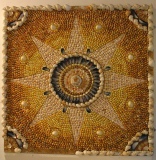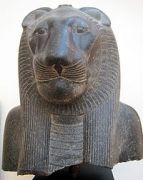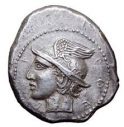“The good and the beautiful freeze to the ice of the absolute idea and the bad and hateful become mud puddles full of crazy life.”
C.G. Jung, The Red Book (Liber Primus, chapter VIII)

Giuseppe Bernardino Bison, “Don Juan in Hell”
Chapter VIII of The Red Book (Liber Primus) was given the title The Conception of the God. Jung starts by quoting the parable of the mustard seed from the Gospel of Matthew:
“The kingdom of heaven is like to a grain of mustard seed, which a man took, and sowed in his field: Which indeed is the least of all seeds: but when it is grown, it is the greatest among herbs, and becometh a tree.”
The death of the hero, discussed in part 9 of the series, has planted a seed. This seed will grow into a new God, who will take the life of Jung’s psyche in a new direction. The new God is likened to “a wondrous child,” who was conceived in pain but whose birth will be joyful. Like the mustard seed, also the divine child is fragile, easily overlooked and disregarded by the guardians of the status quo, who dedicate their life to the spirit of our time:
“We passed by in our ridiculousness and senselessness when we caught sight of you.
Our eyes were blinded and our knowledge fell silent when we received your radiance.
…
The constellation of your birth is an ill and changing star.”
The psychology of the child archetype was analyzed by Jung in a volume which he co-wrote with Karl Kerenyi. Typically in myth, the birth of the divine child, which in psychological terms is “the nascent form of the Self,”(1) is miraculous, yet early childhood is plagued by abandonment and persecution. The abandonment is a necessary consequence of “evolving towards independence,” says Jung (3). It is vital for the divine child to detach from his/her origins. The conscious factors seek to stifle the child and all the new psychological content that the child represents. The child is therefore “easily overlooked and falls back into the unconscious.” (4)

Peter Paul Rubens, “Boy with Bird”
But like the seed the child has also emerged from the depths of Nature and, as Jung says, “represents the strongest, the most ineluctable urge in very being, namely the urge to realize itself.” (5) As such the child becomes also the symbol of the unity of the opposites, as it “anticipates the self which is produced through the synthesis of the conscious and unconscious elements of the personality,” explains the editor of The Red Book in the footnotes.
Next Jung asks a question, which is hotly debated in Jungian circles to this day: does God encompass evil or is he pure good:
“If the God is absolute beauty and goodness, how should he encompass the fullness of life, which is beautiful and hateful, good and evil, laughable and serious, human and inhuman?”
Jung argues that there are no heights without depths, but the descent to the underworld if full of peril. He warns:
“The depths would like to devour you whole and choke you in mud. He who journeys to Hell also becomes Hell; therefore do not forget from whence you come. The depths are stronger than us; so do not be heroes, be clever and drop the heroics, since nothing is more dangerous than to play the hero. The depths want to keep you.”
The newly emerged consciousness is fragile like a child and always in danger of being swallowed, devoured by the depths. But ascent will only come after “night and Hell,” which is why Christ journeyed to the underworld after his death. The dead, says Jung, require sacrificial gifts, “golden cups full of the sweet drink of life.” Such ambiguity, which consists in being poised between darkness and light, is the way of life.
Another important quality of the divine child is uniqueness. Jung always warned against imitation, which he saw as harmful to true individuation. The hero, whom everyone wanted to imitate, had to suffer a metaphorical death, so that a new identity of the psyche could be forged. Jung says:
“Imitation was a way of life when men still needed the heroic prototype. … Human apishness has lasted a terribly long time, but the time will come when a piece of that apishness will fall away from men. That will be a time of salvation and the dove, and the eternal fire, and redemption will descend.”
The notion of individuation means also being able to achieve singleness within oneself, if necessary also outside of “the communal” and “the external.” As Jung says in this chapter:
“If we are in ourselves, we fulfill the need of the self, we prosper, and through this we become aware of the needs of the communal and can fulfill them.”
According to Jung, those who have achieved individuation can serve their community better than those who have been leading communal or conditioned lives. God dwells within the individualized Self (in some interpretations – the Self is God), not without. It has to be emphasized that individuation does not mean perfection; quite the contrary. By acknowledging that he or she cannot imitate the heroes, an individual accepts his or her “incapacity,” which is a necessary step towards achieving inner unity. In his interpretative guide to reading The Red Book, Sanford L. Grob makes an important point about the hero being “insulated from the negative poles of the features that make him/her heroic.” It is often the unacknowledged opposite that brings about the hero’s downfall.
Grob reminds us that complete unity of opposites is not a desirable effect since it is the conflict between them which “produces interest and activity.” When oppositions are overcome, there is no more energy, no more life, or to quote Jung (after Grob) from his Psychological Types: “He who has… gradually given up all attachments and is freed from all pairs of opposites reposes in Brahman alone.”

William Blake, Illustration from The Gates of Paradise
Footnotes:
(1) Liz Greene, The Astrological World of Jung’s Liber Novus: Daimons, Gods and the Planetary Journey, Kindle edition
(2) Carl Jung, Karl Kerenyi, Introduction to a Science of Mythology: The Myth of the Divine Child and the Mysteries of Eleusis, Routledge and Kegan Paul Ltd, London 1951
(3) Ibid.
(4) Ibid.
(5) Ibid.

Support my blog
If you appreciate my writing, consider donating and make my day. Thank you in advance.
$1.00
Reading The Red Book – part 11
Reading The Red Book – part 12
Reading The Red Book – part 13
Reading The Red Book – part 14
Reading The Red Book – part 15
Reading The Red Book – part 16
Reading The Red Book – part 17
Reading The Red Book – part 18
Reading The Red Book – part 19
Reading The Red Book – part 20
Reading The Red Book – part 21
Reading The Red Book – part 22
Reading The Red Book – part 23
Reading The Red Book – part 24
Reading The Red Book – part 25
Reading The Red Book – part 26
Reading The Red Book – part 27
Reading The Red Book – part 28
Reading The Red Book – part 29
Reading The Red Book – part 30
Reading The Red Book – part 31
Reading The Red Book – part 32
Reading The Red Book – part 33
Reading The Red Book – part 34
Reading The Red Book – part 35
Reading The Red Book – part 36
Reading The Red Book – part 37
Reading The Red Book – part 38
Reading The Red Book – part 39
Reading The Red Book – part 40












Pingback: Reading The Red Book (9) | symbolreader
Brahman must be the ultimate chrysalis and transformation for syzygy which is never achievable, but is the never ending search?? A metaphoric syzygy of the alignment of Sun, Moon and Earth.
LikeLiked by 1 person
Yes, very nicely put😊
LikeLike
Dear Monika,
This the tenth blog in a fascinating set of posts: salient, essential, stripped bare of the superfluous, they are a compelling read. Thank you.
Jung’s scholarly insight offers an eclectic vision of the inner worlds of humankind: about the density of mankind; the descent from universal spirit and the journey returning him to God-consciousness. Chapter 9 of your series dealt with the heights, depths, and death of the Hero, which is also continued here in respect of the casting off of imitation and the enablement of individualisation…
“….but the time will come when a piece of that apishness will fall away from men. That will be a time of salvation and the dove, and the eternal fire, and redemption will descend.”
What occurred to me was how closely Jung’s language suggests at a loose interpretation of St. John’s Book of Revelation, 20 lines 1-2,
20 And I saw an angel come down from heaven, having the key of the bottomless pit and a great chain in his hand.
2 And he laid hold on the dragon, that old serpent, which is the Devil, and Satan, and bound him a thousand years.
One wonders if Revelations provides a powerful symbolic picture of the soul’s development, of which an emerging new consciousness – like that of a child – results?
Blake’s etching is conceptually sublime. I’ve not come across it before. Thank you for including it here.
Have a wonderful week,
DN
LikeLiked by 1 person
Dear DN,
This is a really intriguing quote from Revelations. I agree with you. I think Jung said a few times that we cannot understand psychology without the Bible and its imagery. I guess The Red Book is as dense as Revelations at times, especially Liber Secundus, but I am still in Liber Primus, though towards the end of it. I am happy that there are thoughtful readers out there who want to share this journey with me. I mainly write to understand, to get through the density, and in the hope to achieve some sort of transformation or release. I remember when I started reading Jung in 2001 I felt how that writing rewired my whole being. It is still doing that.
Thank you for being there
MR
LikeLiked by 1 person
Dear MR,
Many turn to Jung when journeying inwards, quite possibly to experience and/or ‘tear apart’ the ego (and embrace/reflect upon the archetypes) as much to escape the conventions (and social, cultural conditionings) of our time. Christianity was the prevailing religion when Jung made the decision to write the Red Book.
I have heard it suggested that Liber Primus is best read end-to-end before returning to read its individual chapters in detail…one reason is that the totality of the book must be generally considered before descending more deeply into each chapter. I understood this to mean that Liber Primus might be likened to making (mental) preparation before departing on a long voyage. That you have read Jung since 2001 suggests at the respect you have for his work, his steerage and erudite guidance, and the desire you have in yourself to reach your own destination. It is often said that the journey itself is far more worthy (and asks more of us) than the destination we arrive at.
One wonders what transformation you might anticipate, or what you are hoping to be released from? It is not my business to ask, but rather to hope that you fulfil your desire to reach your individual goal/s. It is to your credit that you write about and share your Jungian adventures with your readers…no doubt many find your posts inspiring – I know I do 🙂 WP is a wonderfully supportive community.
Wishing you a wonderful evening and a transformative week ahead.
DN
LikeLiked by 1 person
I’m reading The Red Book right now too. I will have to catch up on all your posts! 🙏🏼
LikeLiked by 1 person
Great to know I’m not alone, Julianne😊
LikeLiked by 1 person
Reblogged this on lampmagician.
LikeLike